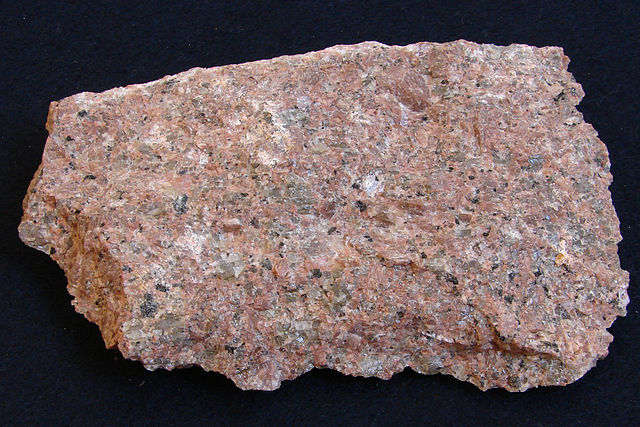Igneous rocks are rocks formed from the solidification (cooling and hardening) of magma at depth or on the surface. Igneous rocks are the main rock types forming other rock types namely sedimentary and metamorphic.
They also form cratons which are basement rocks of continents. Examples of igneous include granite, gabbro, rhyolite, basalt, andesite, diorite and many others. They are formed deep within the earth’s crust from the solidification of magma.
This magma would have been produced by melting of other rock types or the igneous itself. As the rocks harden at depth, erosion and uplift from tectonic movements expose them to the surface.
Some are exposed as large intrusive features such as batholiths or medium intrusions like dikes or as tors which are boulders lying on top of another. In addition, volcanic eruptions can eject some igneous rocks and land on the surface.
Some igneous rock landforms
- Cratons of continents
- Intrusive landforms (batholiths, laccoliths, dikes, sills etc)
- Inselbergs such as tors, dwalas and bornhardts
- Steep rock faces (scarps)
Igneous rocks can be intrusive (within the crust or mantle) or extrusive (formed on the surface). Examples of intrusive igneous rocks include granite, diorite and ryholite; extrusive igneous include basalt, gabbro and peridotite.
Characteristics of Igneous
Igneous rocks commonly posses the following characteristics.
- Hard and durable making them resistant to weathering, erosion and fire.
- Mineral composition include quartz, micas, feldspars, hornblende, pyroxene and olivine.
- Shiny when wet
- Light (felsic) or dark (mafic) coloured
- Joints & cracks
Igneous rocks can be fine or coarse grained depending on the location were the magma cools. Rocks that cool slowly are coarse grained while faster cooling produces fine textures with minerals invisible to the naked eye.
Deep cooling often produces coarse grains while surface cooling creates fine textures as low temperatures are experienced.
- Aphanitc
- A fine textured igneous rocks formed from magma/lava cooling on or near the surface
- Phaneritic
- A coarse grained igneous rock formed by cooling of magma below.
- Pumice
- A froathy texture of intertwined rock fragments formed when rocks are ejected high up in the air making them cool faster.
- Obsidian
- A glassy texture formed from rapid cooling of magma on the surface. These rock textures don’t have a defined arrangement of atom, i.e non-crystallined.
- Porphyritic texture
- A texture were coarse grains (phenocrysts) are interbedded between fine grained granules called groundmass. These form when other minerals grow large before others form at depth and then ejected into the air where cooling is rapid.
 Porphyritic Rock
Porphyritic RockIgneous rocks can be classified according to texture and mineral composition. For example a light coloured (felsic), coarse grained (phaneritic) rock consisting of mica, quartz and feldspar is termed granite.
A mafic rock (dark) type with a phaneritc texture (coarse grained) consisting of pyroxenes is called gabbro.
 Igneous Classification based on Texture and Mineralogy; image GeoEarthScience
Igneous Classification based on Texture and Mineralogy; image GeoEarthScience Granite Rock with mica (pink), quartz (white) and feldspars (brown); wikipedia
Granite Rock with mica (pink), quartz (white) and feldspars (brown); wikipedia